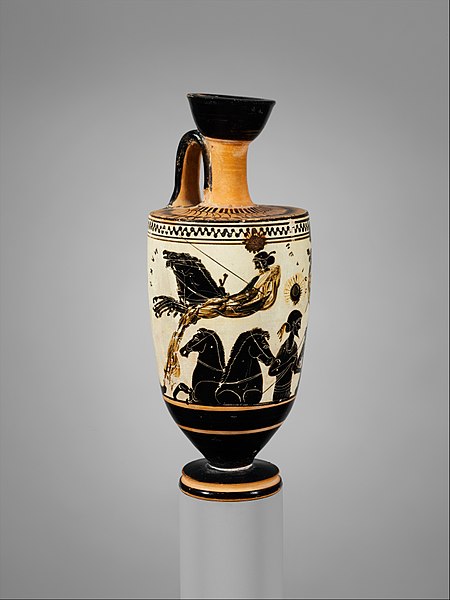In Greek mythology, Hemera was the personification of day. According to Hesiod, she was the daughter of Erebus (Darkness) and Nyx (Night), and the sister of Aether. Though separate entities in Hesiod's Theogony, Hemera and Eos (Dawn) were often identified with each other.
Relief of Hemera from the Aphrodisias Sebasteion
Hemera (1881) by William-Adolphe Bouguereau
In Greek mythology, Nyx is the goddess and personification of the night. In Hesiod's Theogony, she is the offspring of Chaos, and the mother of Aether and Hemera (Day) by Erebus (Darkness). By herself, she produces a brood of children which are personifications of primarily negative forces. She features in a number of early cosmogonies, which place her as one of the first deities to exist. In the works of poets and playwrights, she lives at the ends of the Earth, and is often described as a black-robed goddess who drives through the sky in a chariot pulled by horses. In the Iliad, Homer relates that even Zeus fears to displease her.
Nyx is shown driving to the left in a chariot pulled by two horses. To the right of her is Helios, who ascends into the sky in his quadriga at the start of the new day. Attic terracotta lekythos, attributed to the Sappho Painter, c. 500 BC.
Nyx depicted in the Paris Psalter, a 10th-century Greek manuscript, National Library of France
Roman-era bronze statuette of Nyx velificans or Selene (Getty Villa)





